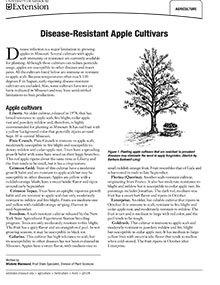

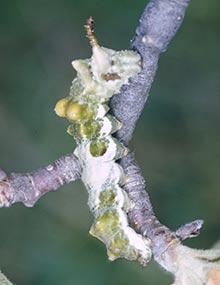
Caterpillars in Your Yard and Garden, Page 36
Reviewed
Red-spotted purple caterpillars (Limenitis arthemis) are present from early summer to fall. They produce two generations per year.
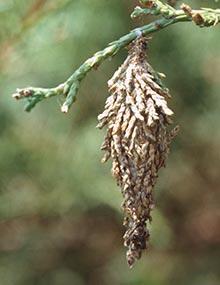
Caterpillars in Your Yard and Garden, Page 04
Reviewed
Bagworm caterpillars (Thyridopteryx ephemeraeformis) are present from early June to August. They produce one generation per year.

Caterpillars in Your Yard and Garden, Page 07
Reviewed
Cabbage looper caterpillars (Trichoplusia ni) are present from late spring to fall. They produce two to three generations per year.
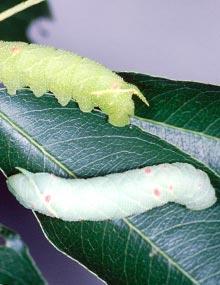
Caterpillars in Your Yard and Garden, Page 39
Reviewed
Smalleyed sphinx caterpillars (Paonias myops) are present from May through September. They produce multiple generations per year.
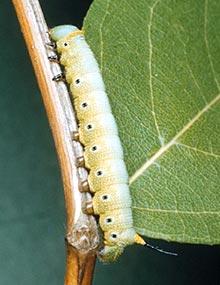
Caterpillars in Your Yard and Garden, Page 10
Reviewed
Clearwinged sphinx caterpillars (Hemaris diffinis) are present from April to September. They produce two generations per year.
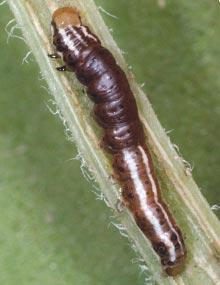
Caterpillars in Your Yard and Garden, Page 42
Reviewed
Stalk borer caterpillars (Papaipema nebris) are present from May to August. They produce one generation per year.

Caterpillars in Your Yard and Garden, Page 13
Reviewed
Eastern tent caterpillars (Malacosoma americanum) are present from early spring to June. They produce one generation per year.

Caterpillars in Your Yard and Garden, Page 45
Reviewed
Learn to identify and manage tobacco and tomato hornworms in your garden with tips on appearance, feeding habits, and control methods.
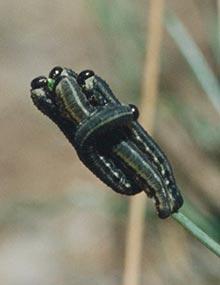
Caterpillars in Your Yard and Garden, Page 16
Reviewed
European pine sawfly caterpillars (Neodiprion sertifer) are present in spring and summer. They produce one generation per year.
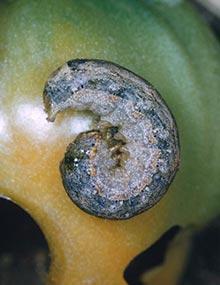
Caterpillars in Your Yard and Garden, Page 48
Reviewed
Variegated cutworm caterpillars (Peridroma saucia) are present from late spring to early summer. They produce two to four generations per year.

Caterpillars in Your Yard and Garden, Page 19
Reviewed
Gray furcula caterpillars (Furcula cinerea) are present from spring to fall. They produce two generations per year.

Caterpillars in Your Yard and Garden, Page 51
Reviewed
Red phase and black phase walnut caterpillars (Datana integerrima) are present from early May to September. They produce one to two generations per year.
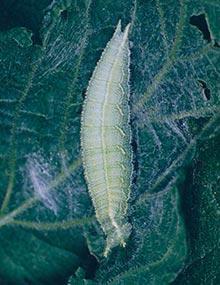
Caterpillars in Your Yard and Garden, Page 22
Reviewed
Hackberry emperor caterpillars (Asterocampa celtis) are present from early summer to fall. They produce two generations per year.
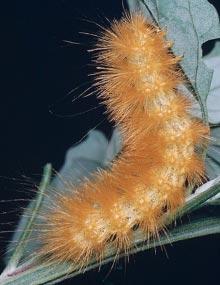
Caterpillars in Your Yard and Garden, Page 54
Reviewed
Yellow woollybear caterpillars (Spilosoma virginica) are present from spring to fall. They produce two to three generations per year.
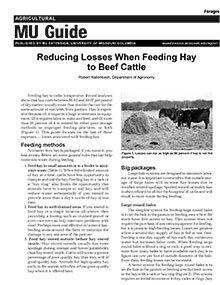
Reducing Losses When Feeding Hay to Beef Cattle
Reviewed
Feeding hay to cattle is expensive, mostly due to waste. Learn good management practices to minimize the losses that occur due to poor storage methods, improper feeding methods, or both.
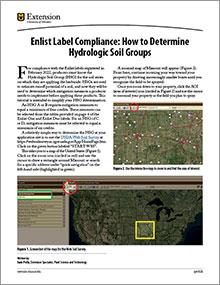
Enlist Label Compliance: How to Determine Hydrologic Soil Groups
New
Learn how to use the USDA Web Soil Survey interactive map to determine your field's hydrologic soil group for the soil series on which you plan to apply an Enlist herbicide.

Liver Flukes in Missouri: Distribution, Impact on Cattle, Control and Treatment
Reviewed
Cattle operations should evaluate their risk for is Fascioloides magna, also known as the deer fluke or the giant liver fluke. Learn about its distribution in Missouri, its life cycle, treatment and more in this guide.
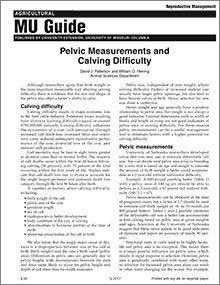
Pelvic Measurements and Calving Difficulty
Reviewed
Learn how pelvic measurements can help estimate calf birth weight and reduce calving difficulty in beef cattle.

Decision-Making Techniques for Community Groups
Reviewed
Explore four decision-making techniques to help community groups identify and prioritize projects effectively.
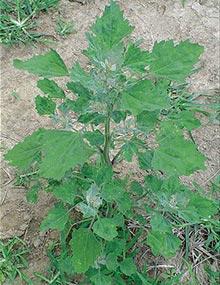
Quail-Friendly Plants of the Midwest, Page 29
Reviewed
Lambsquarters is rather nondescript and typically grows 2-6 feet tall. Leaves are triangular or kite-shaped, and their surfaces often have a powdery white appearance.

Controlling Voles in Horticulture Plantings and Orchards in Missouri
Reviewed
Learn to manage vole damage in Missouri's horticultural plantings and orchards with effective control strategies for these small mammals.
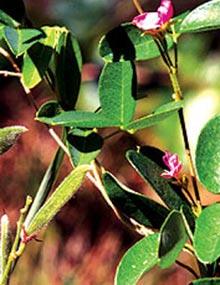
Quail-Friendly Plants of the Midwest, Page 32
Reviewed
Milkpea is a herbaceous legume with a hairy surface on the top of its trilobed leaf. Stems are also hairy. Seedpods are about 2-1/2 inches long.
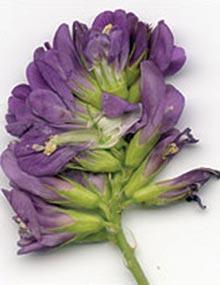
Quail-Friendly Plants of the Midwest, Page 03
Reviewed
Alfalfa leaves are divided into three leaflets, with the middle leaflet on a distinct stalk. Leaflets are serrated along the outer third to half and are somewhat elongated. Flowers are usually purple, sometimes bluish, rarely white. Fruits are usually curved or twisted.
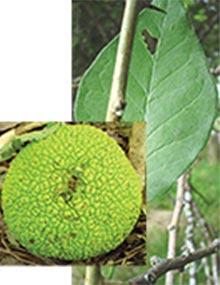
Quail-Friendly Plants of the Midwest, Page 35
Reviewed
Osage orange grows as a medium-sized tree up to 50 feet tall. It has yellow-green fleshy fruits with a knobby surface that resembles a brain. Its alternate, simple leaves taper to a long, pointed tip.